BulgariaSat-1
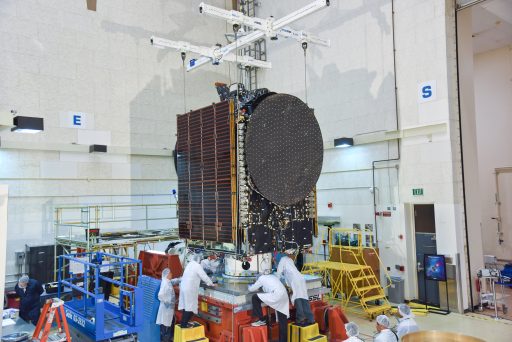
BulgariaSat-1 is a Geostationary Communications Satellite operated by Bulgaria Sat and built by Space Systems/Loral to deliver a variety of communication services to the Balkan Countries and large portions of Western and Central Europe. Carrying a combined Fixed- and Broadcasting Satellite Services payload, BulgariaSat-1 will support high-definition video distribution, Direct-to-Home Television, corporate networks, VSAT communications and Satellite News Gathering.
Bulgaria Sat is an affiliate of leading Bulgarian pay-TV provider Bulsatcom that delivers more than 100 digital TV channels plus broadband Internet access. The Sofia-based company is the only Bulgarian satellite operator and Bulgaria Sat 1 is the country’s first Geostationary communications satellite, envisioned to deliver reliable communications for broadcasting, telecommunications, corporate application and government customers in South East Europe and other European regions.
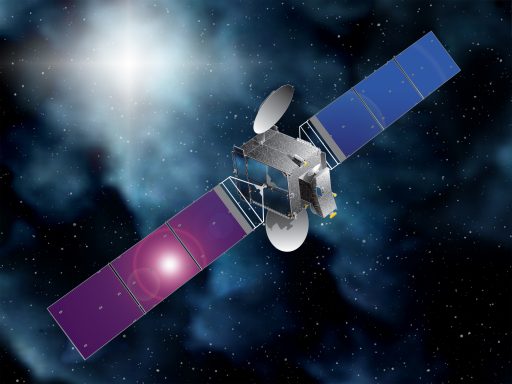
Space Systems/Loral announced in September 2014 that the California-based company was selected to build the BulgariaSat-1 satellite based on the flight-proven SSL-1300 platform that has extensive flight heritage in geostationary communications satellites. In cooperation with SS/L, Bulgaria Sat obtained all the financing needed for the satellite project, including export credit financing from the Export-Import Bank of the United States. The contract for BulgariaSat-1 was of a ‘delivery in orbit’ type with the contractor in charge of selecting launch services for the satellite and handing the product over once fully operational in its orbital slot.
BulgariaSat-1 is launched aboard a SpaceX Falcon 9 FT rocket, flying its second re-use mission with a “flight-proven” first stage that already completed one trip to the edge of space and back in an operational mission. Booster B1029 launched on January 14, 2017 from Vandenberg Air Force Base, dispatching ten Iridium-NEXT satellites toward orbit before making a propulsive return to land on the ‘Just Read The Instructions’ drone ship. This will be the first orbital booster to fly from both coasts of the United States.
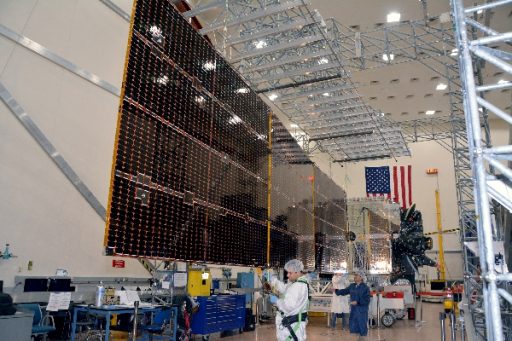
BulgariaSat-1 hosts a total of 33 Ku-Band transponders – three are operated as Fixed Satellite Services transponders and 30 are for Broadcasting Satellite Services in support of HDTV and Ultra HD broadcasting. The satellite operates at downlink frequencies of 11.3 to 12.6 GHz and the 33MHz transponders use an uplink band of 17.3 to 18.1 GHz and the 36MHz transponders require uplink at 13.2 – 14.1 GHz.
The satellite’s Ku-Band payload feeds two coverage zones – a Balkan Beam and a European Beam. The Balkan Beam is centered on Bulgaria, but also covers neighboring countries – stretching from the Greek Island of Crete as far north as southern Poland, and from Slovenia & Austria all the way east to the to the Bosporus. The European Beam also covers the entire Balkan region plus the majority of Western and Central Europe and extending as far east as the Caspian Sea.
BulgariaSat-1 intends to inaugurate a new DTH hot-spot at two degrees East for DTH operators and video markets across the Balkans, Europe, the Middle East and North Africa. The spacecraft has a planned service life of 15 years and its propellant supply is expected to last for 20 years, thanks to a Super-Synchronous injection by the Falcon 9 rocket that saves the satellite fuel during its transition to Geostationary Orbit by starting closer to its operational orbit.
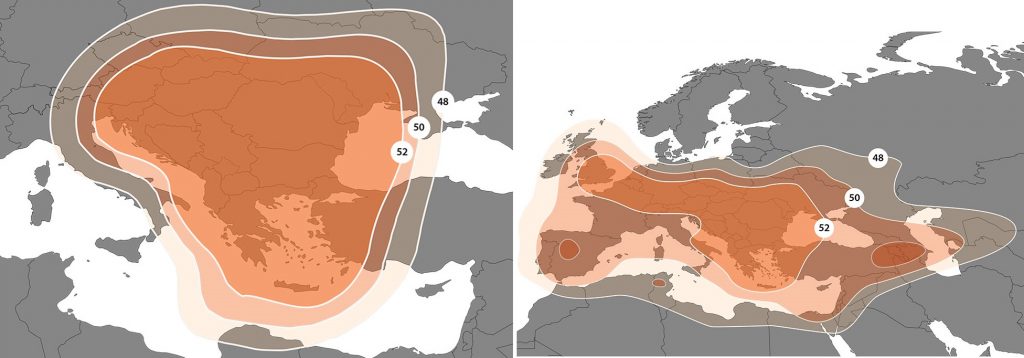
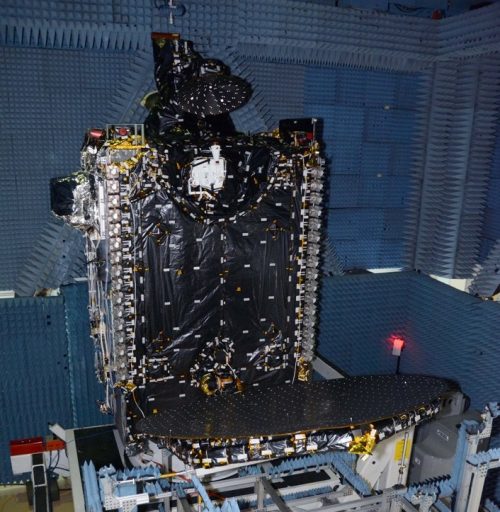
SSL-1300 is a flexible satellite platform that can be flown in different configurations to accommodate different communication payloads with a total power of 5 to 18kW. Using different configurations, LS-1300 satellites can weigh from 2,200 up to 6,700 Kilograms featuring payloads of 12 to 150 transponders. Through optimizations, the number of transponders that can be accommodated can be increased even further. SSL-1300 was introduced in the late 1980s, but undergoes constant modifications going through a number of revisions over the years.
BulgariaSat-1 uses an intermediate-power variant of SSL-1300, featuring two three-panel solar arrays that deliver 10kW of power to a dedicated system that conditions the satellite’s power bus and controls the state of charge of the vehicle’s batteries. Three-axis stabilization and navigation is accomplished by state of the art navigation sensors and reaction wheels.
The satellite is equipped with a chemical propulsion system for orbit-raising and stationkeeping using an R-4D main engine and a series of attitude control thrusters. LS-1300 also provides the option of an additional electric propulsion system, whether this option is exercised for BulgariaSat-1 is not known.
The satellite features an onboard propulsion system centered around an R-4D-11 engine. The R-4D engine is a Monomethylhydrazine/Nitrogen Tetroxide Engine that provides 490 Newtons of thrust. The engine is 0.55 meters long and 0.28 meters in diameter with an unfueled mass of 3.63 kilograms. The engine provides a specific impulse of 312s, has a thrust to weight ratio of 13.7 and operates at a chamber pressure of 6.9 bar. The original RD-4 was developed as an attitude control thruster for the Apollo Service and Lunar Lander modules.
